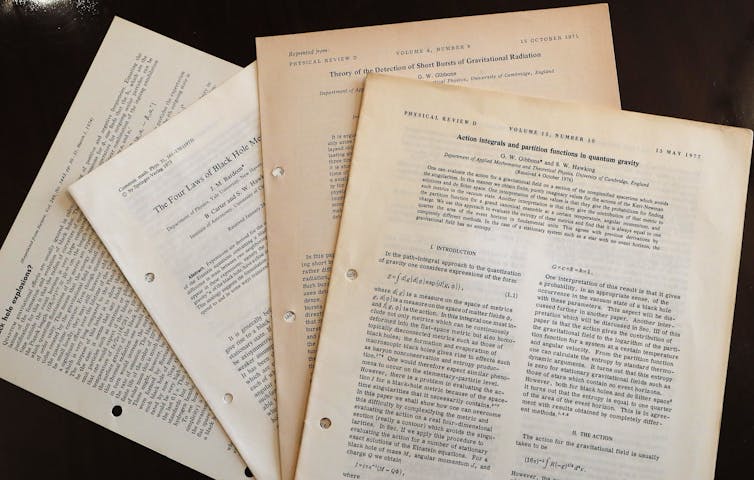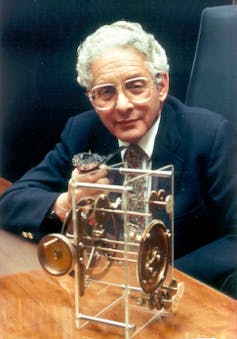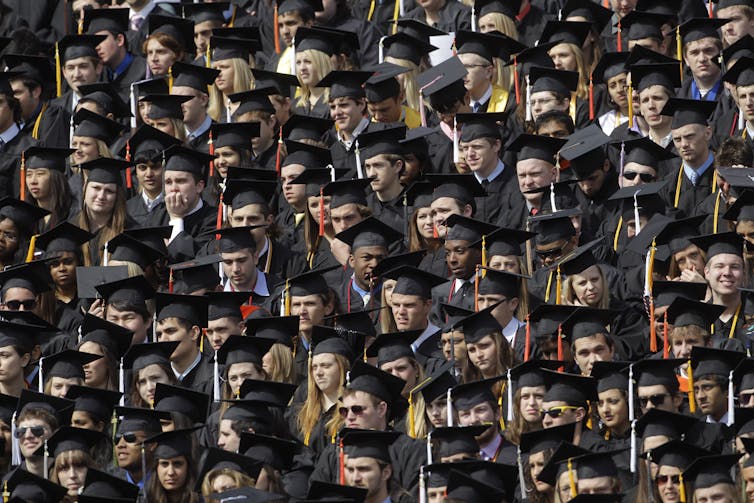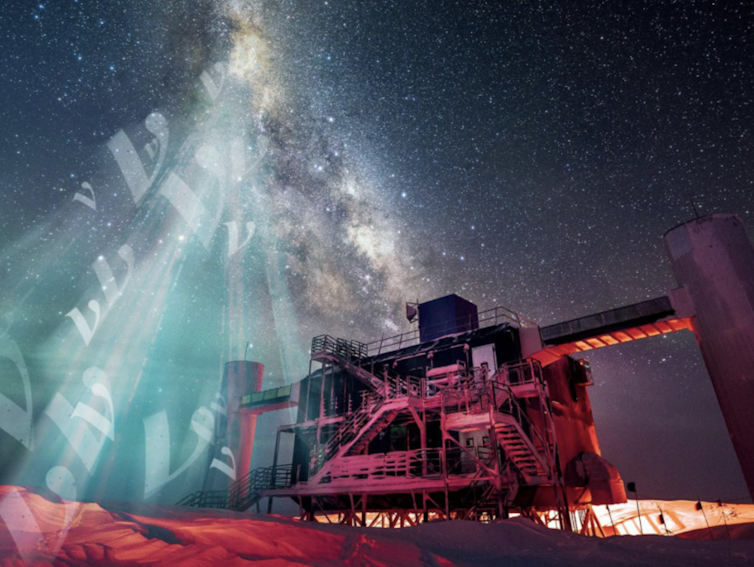The number of research studies published globally has risen exponentially in the past decades.
David P. Baker, Penn State and Justin J.W. Powell, University of Luxembourg
Millions of scientific papers are published globally every year. These papers in science, technology, engineering, mathematics and medicine present discoveries that range from the mundane to the profound.
Since 1900, the number of published scientific articles has doubled about every 10 to 15 years; since 1980, about 8% to 9% annually. This acceleration reflects the immense and ever-growing scope of research across countless topics, from the farthest reaches of the cosmos to the intricacies of life on Earth and human nature.
Derek de Solla Price wrote an influential book about the growth rate of science.
Yet, this extraordinary expansion was once thought to be unsustainable. In his influential 1963 book, “Little Science, Big Science… And Beyond,” the founder of scientometrics – or data informetrics related to scientific publications – Derek de Solla Price famously predicted limits to scientific growth.
He warned that the world would soon deplete its resources and talent pool for research. He imagined this would lead to a decline in new discoveries and potential crises in medicine, technology and the economy. At the time, scholars widely accepted his prediction of an impending slowdown in scientific progress.
Faulty predictions
In fact, science has spectacularly defied Price’s dire forecast. Instead of stagnation, the world now experiences “global mega-science” – a vast, ever-growing network of scientific discovery. This explosion of scientific production made Price’s prediction of collapse perhaps the most stunningly incorrect forecast in the study of science.
Unfortunately, Price died in 1983, too early to realize his mistake.
So, what explains the world’s sustained and dramatically increasing capacity for scientific research?
We are sociologists who study higher education and science. Our new book, “Global Mega-Science: Universities, Research Collaborations, and Knowledge Production,” published on the 60th anniversary of Price’s fateful prediction, offers explanations for this rapid and sustained scientific growth. It traces the history of scientific discovery globally.
Factors such as economic growth, warfare, space races and geopolitical competition have undoubtedly spurred research capacity. But these factors alone cannot account for the immense scale of today’s scientific enterprise.
The education revolution: Science’s secret engine
In many ways, the world’s scientific capacity has been built upon the educational aspirations of young adults pursuing higher education.
Funding from higher education supports a large part of the modern scientific enterprise.
Over the past 125 years, increasing demand for and access to higher education has sparked a global education revolution. Now, more than two-fifths of the world’s young people ages 19-23, although with huge regional differences, are enrolled in higher education. This revolution is the engine driving scientific research capacity.
Today, more than 38,000 universities and other higher-education institutions worldwide play a crucial role in scientific discovery. The educational mission, both publicly and privately funded, subsidizes the research mission, with a big part of students’ tuition money going toward supporting faculty.
These faculty scientists balance their teaching with conducting extensive research. University-based scientists contribute 80% to 90% of the discoveries published each year in millions of papers.
External research funding is still essential for specialized equipment, supplies and additional support for research time. But the day-to-day research capacity of universities, especially academics working in teams, forms the foundation of global scientific progress.
Even the most generous national science and commercial research and development budgets cannot fully sustain the basic infrastructure and staffing needed for ongoing scientific discovery.
Likewise, government labs and independent research institutes, such as the U.S. National Institutes of Health or Germany’s Max Planck Institutes, could not replace the production capacity that universities provide.
Collaboration benefits science and society
The past few decades have also seen a surge in global scientific collaborations. These arrangements leverage diverse talent from around the world to enhance the quality of research.
International collaborations have led to millions of co-authored papers. International research partnerships were relatively rare before 1980, accounting for just over 7,000 papers, or about 2% of the global output that year. But by 2010 that number had surged to 440,000 papers, meaning 22% of the world’s scientific publications resulted from international collaborations.
This growth, building on the “collaboration dividend,” continues today and has been shown to produce the highest-impact research.
Universities tend to share academic goals with other universities and have wide networks and a culture of openness, which makes these collaborations relatively easy.
Today, universities also play a key role in international supercollaborations involving teams of hundreds or even thousands of scientists. In these huge collaborations, researchers can tackle major questions they wouldn’t be able to in smaller groups with fewer resources.
Supercollaborations have facilitated breakthroughs in understanding the intricate physics of the universe and the synthesis of evolution and genetics that scientists in a single country could never achieve alone.
The IceCube collaboration, a prime example of a global megacollaboration, has made big strides in understanding neutrinos, which are ghostly particles from space that pass through Earth. Martin Wolf, IceCube/NSF
The role of global hubs
Hubs made up of universities from around the world have made scientific research thoroughly global. The first of these global hubs, consisting of dozens of North American research universities, began in the 1970s. They expanded to Europe in the 1980s and most recently to Southeast Asia.
These regional hubs and alliances of universities link scientists from hundreds of universities to pursue collaborative research projects.
Scientists at these universities have often transcended geopolitical boundaries, with Iranian researchers publishing papers with Americans, Germans collaborating with Russians and Ukrainians, and Chinese scientists working with their Japanese and Korean counterparts.
The COVID-19 pandemic clearly demonstrated the immense scale of international collaboration in global megascience. Within just six months of the start of the pandemic, the world’s scientists had already published 23,000 scientific studies on the virus. These studies contributed to the rapid development of effective vaccines.
With universities’ expanding global networks, the collaborations can spread through key research hubs to every part of the world.
Is global megascience sustainable?
But despite the impressive growth of scientific output, this brand of highly collaborative and transnational megascience does face challenges.
On the one hand, birthrates in many countries that produce a lot of science are declining. On the other, many youth around the world, particularly those in low-income countries, have less access to higher education, although there is some recent progress in the Global South.
Sustaining these global collaborations and this high rate of scientific output will mean expanding access to higher education. That’s because the funds from higher education subsidize research costs, and higher education trains the next generation of scientists.
De Solla Price couldn’t have predicted how integral universities would be in driving global science. For better or worse, the future of scientific production is linked to the future of these institutions.![]()
David P. Baker, Professor of Sociology, Education and Demography, Penn State and Justin J.W. Powell, Professor of Sociology of Education, University of Luxembourg
This article is republished from The Conversation under a Creative Commons license. Read the original article.























































